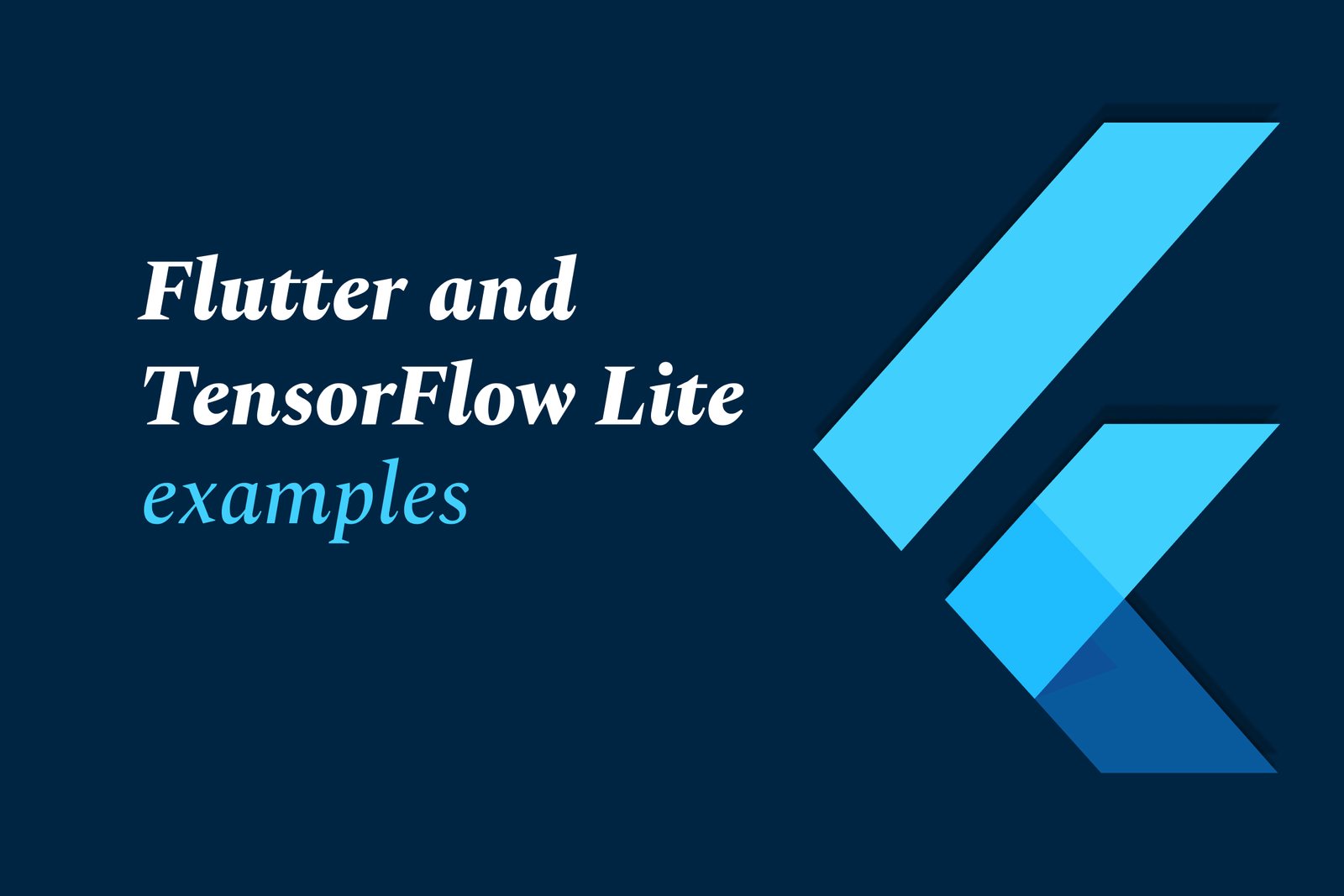Flutter and TensorFlow lite examples
Flutter enables cross-platform app development with expressive UIs, while TensorFlow Lite brings on-device ML, including training. Together, they allow integrating efficient, adaptive AI models into Flutter apps for enhanced, personalized user experiences across devices.
Flutter and TensorFlow Lite examples
1 ) Overview of Flutter
Flutter is Google's open source UI toolkit for building natively compiled, multi platform applications from a single codebase.
Supports mobile (iOS, Android), web, desktop (Windows, macOS, Linux), and embedded devices.
Features include fast performance by compiling to native ARM/Intel machine code, productive development with Hot Reload, and flexible, pixel perfect UI design.
Flutter applications use their own rendering engine to deliver consistent UI across platforms.
2 ) Getting Started with Flutter
Development environment suggested: Visual Studio Code (VS Code) for ease of use with Flutter specific tooling.
Multi platform target apps can be developed, but commonly a single primary target OS is used during development (e.g., Android or Windows).
Flutter enables rapid iteration, stateful hot reload, and adaptive UI for multiple screen sizes and device types.
3 ) Introduction to TensorFlow Lite
TensorFlow Lite (TFLite) is Google's framework for deploying machine learning models on mobile, desktop, embedded, and browser platforms.
Supports on device model inference and, more recently, on device training to enable personalization and fine tuning of models.
On device training facilitates use cases like transfer learning directly on user devices, enabling customized models specific to user needs.
Currently, on device training is supported on Android (with iOS support planned).
4 ) TensorFlow Lite On Device Training Architecture
Build a TensorFlow model that supports both inference and training (including saving/loading model weights).
Convert the TensorFlow model into TensorFlow Lite format.
Integrate the TensorFlow Lite model into the Android app.
Invoke training and inference functions inside the app, enabling on device learning and model updates without server round trips.
5 ) Improvements in TensorFlow Lite On Device Training
Recent TensorFlow Lite versions offer more streamlined APIs versus earlier complex approaches that required multiple models and manual weight management.
Simplified customization of model architecture and optimizers to suit specific on device training needs.
Easier to manage persistent training state and update weights incrementally.
6 ) Flutter and TensorFlow Lite Integration Examples
Developers can combine Flutter’s multi platform UI toolkit with TensorFlow Lite’s on device ML capabilities.
For example, in Android apps, TFLite models can be embedded and accessed via Flutter plugins or platform channels to run inference or training.
Azure Custom Vision models exported as TensorFlow Lite can be utilized in Xamarin.Android (C#) apps, demonstrating cross language adaptability of TFLite models.
Community and official samples cover usage patterns for image classification, personalization, and other ML powered features in Flutter apps.
7 ) Additional Resources and Ecosystem
Flutter and TensorFlow Lite have extensive documentation, tutorials, and community support available.
Big tech and open source contributors continuously update these frameworks for broader platform support and improved developer experience.
Summary:
Flutter empowers developers to build expressive, high performance apps across platforms from one codebase with rich UI capabilities. TensorFlow Lite complements this by providing on device machine learning, including recently added support for on device training to personalize models. Together, they enable creating advanced, intelligent, and adaptive user experiences on mobile and beyond. Numerous examples and guides exist to integrate TensorFlow Lite models into Flutter apps, covering deployment, inference, and training workflows.
https://justacademy.in/news-detail/dart-3.2:-what’s-new-for-flutter-devs
https://justacademy.in/news-detail/why-flutter-developers-are-in-high-demand-in-india
https://justacademy.in/news-detail/using-google’s-vertex-ai-with-flutter-apps
https://justacademy.in/news-detail/major-companies-adopting-flutter-in-2025
https://justacademy.in/news-detail/flutterflow-and-low-code-revolution-in-2025
Related Posts
In 2025, top Angular libraries offer modern, feature-rich components and tools for building dynamic web apps. From powerful data grids to low-code platforms like UI Bakery, these libraries enhance development speed, UI design, and scalability, making them essential for Angular developers.
Migrating from AngularJS to Angular 17 involves gradually upgrading your app by running both frameworks together using tools like ngUpgrade, rewriting components in TypeScript, and adopting Angular’s modern architecture to enhance performance, maintainability, and long-term support.
Angular state management tools help organize and handle app data efficiently, improving scalability and maintainability. Popular options include NgRx for robust, RxJS-based patterns, and newer Signal Store solutions that offer simpler, reactive approaches integrated tightly with Angular’s latest features.
RxJS in Angular empowers developers to manage asynchronous data streams with powerful operators like `forkJoin`, `combineLatest`, and `zip`. Mastering these key operators in 2025 is essential for building efficient, reactive applications that handle complex event sequences seamlessly.
Angular performance optimization in 2025 focuses on improving app speed and responsiveness by using techniques like OnPush change detection, lazy loading, efficient data caching, and AOT compilation. These practices reduce load times, enhance user experience, and ensure scalable, fast Angular applications.
In 2025, Angular remains preferred for large-scale, enterprise apps with its robust, all-in-one framework, while Vue attracts developers seeking simplicity and fast development for smaller projects. Both frameworks excel, with choice driven by project needs and team expertise.
Angular Signals are a new reactive primitive in Angular 16 that enable fine-grained, efficient change detection by automatically tracking dependencies and updating only affected parts of the UI. They simplify state management and boost app performance, revolutionizing Angular's reactivity model.
Angular interview questions to prepare in 2025 focus on core concepts like components, directives, data binding, routing, and dependency injection, along with TypeScript mastery and latest Angular features to ensure strong practical knowledge for building scalable, efficient web applications.
AngularJS reached its official end of support in January 2022, meaning no further updates or security patches. To ensure app security and performance, developers should consider migrating to modern Angular versions or seek third-party long-term support options if immediate migration isn’t possible.
The Angular Roadmap 2025 highlights upcoming features focused on improving developer experience and performance, including zoneless Angular, Signals integration, enhanced Forms, async data handling, improved HMR, and expanded Angular Material/CDK enhancements, driving modern, efficient web app development.










